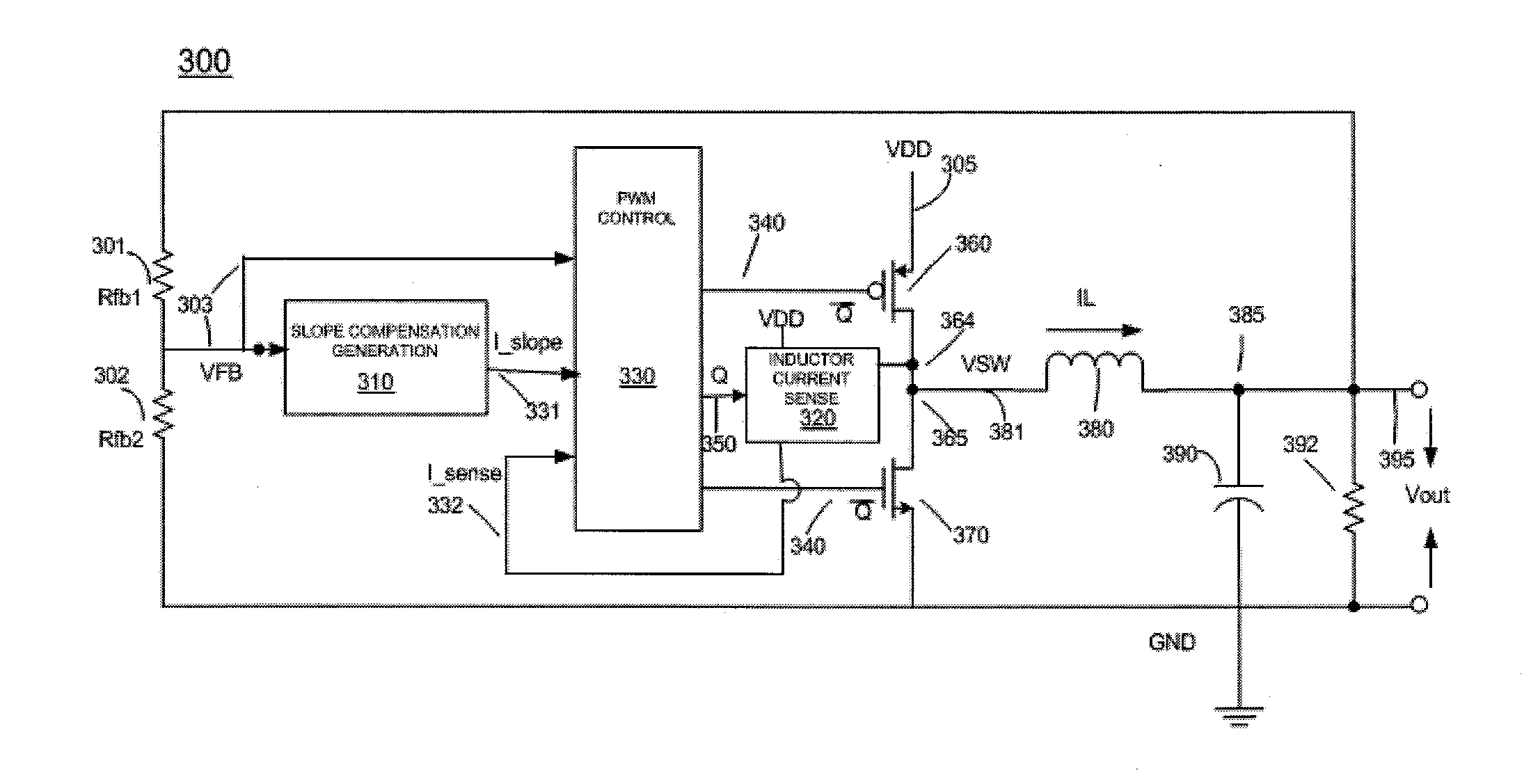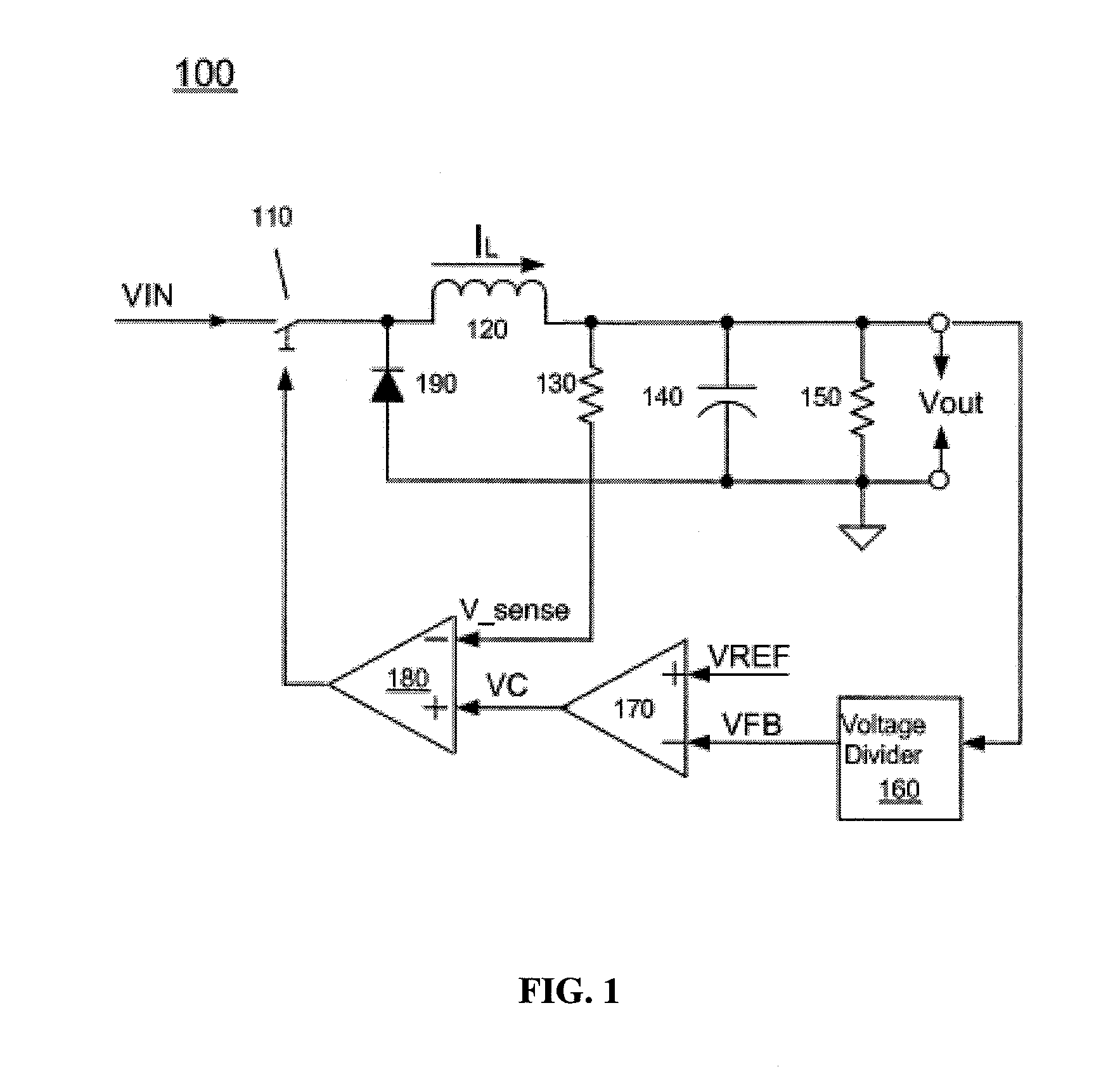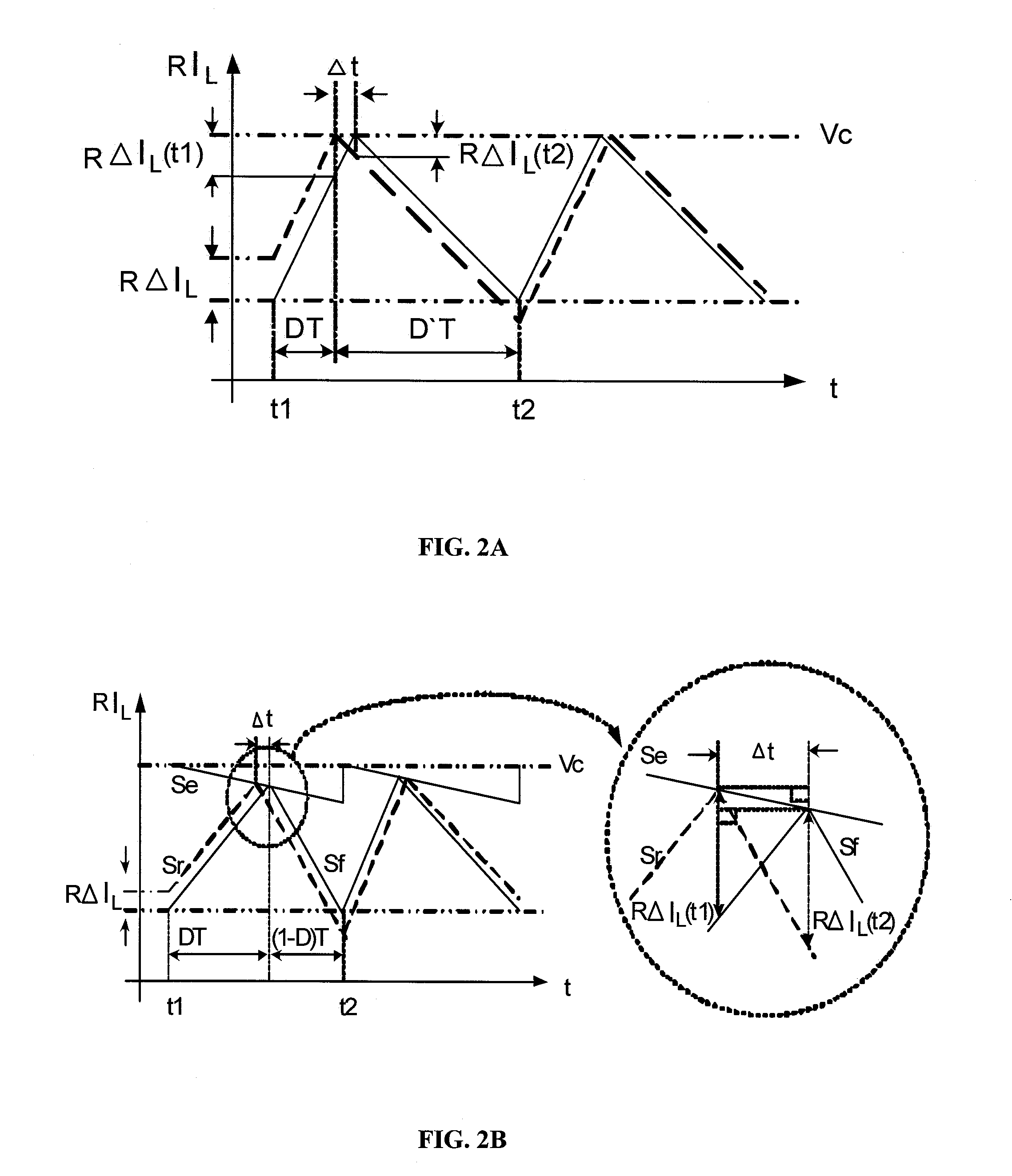Self-adaptive current-mode-control circuit for a switching regulator
a switching regulator and current mode control technology, applied in the field of system and method of controlling power electronic circuitry, can solve the problems of increasing complexity, affecting the operation of the switching regulator, so as to achieve the effect of reducing the complexity of the switching regulator
- Summary
- Abstract
- Description
- Claims
- Application Information
AI Technical Summary
Benefits of technology
Problems solved by technology
Method used
Image
Examples
Embodiment Construction
[0019]In the following description, specific details are set forth describing embodiments of the present disclosure. It will be apparent, however, to one skilled in the art that some embodiments may be practiced without some or all of these specific details. The specific embodiments disclosed herein are meant to be illustrative but not limiting. One skilled in the art may realize other material that, although not specifically described here, is within the scope and the spirit of this disclosure.
[0020]Switching regulators typically have two control modes: a voltage-control mode and a current-control mode. The voltage-control mode often requires an LC filter that adds conjugate poles, resulting in a difficult control loop design and a slower transient response. However, the current-control mode uses an extra current control loop alongside a voltage control loop. This current control loop senses the inductor current and changes the two conjugate poles into one pole in a low frequency f...
PUM
 Login to View More
Login to View More Abstract
Description
Claims
Application Information
 Login to View More
Login to View More - R&D
- Intellectual Property
- Life Sciences
- Materials
- Tech Scout
- Unparalleled Data Quality
- Higher Quality Content
- 60% Fewer Hallucinations
Browse by: Latest US Patents, China's latest patents, Technical Efficacy Thesaurus, Application Domain, Technology Topic, Popular Technical Reports.
© 2025 PatSnap. All rights reserved.Legal|Privacy policy|Modern Slavery Act Transparency Statement|Sitemap|About US| Contact US: help@patsnap.com



